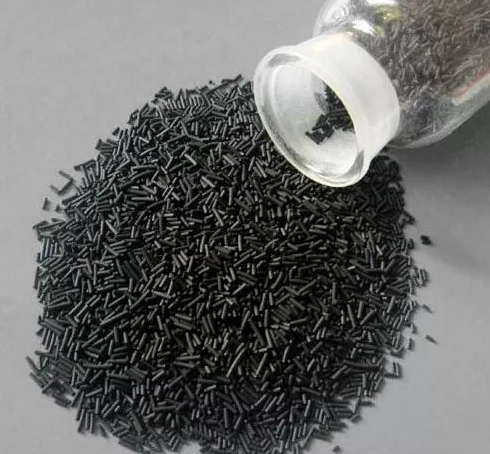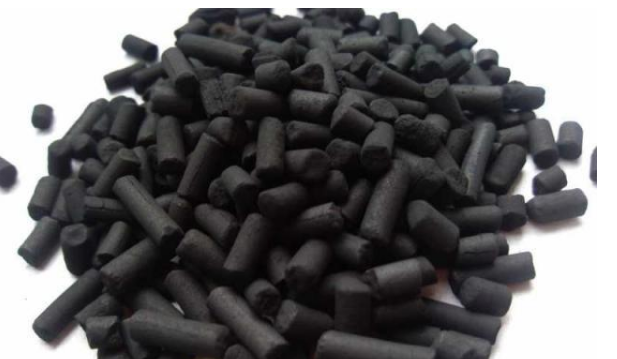Advantages and replacement of activated carbon and carbon molecular sieve of nitrogen generator
Carbon molecular sieves (CMS) is a new type of adsorbent developed in the 1970s. It is a kind of excellent non-polar carbon material. CMS is used to separate and enrich nitrogen from air and adopt the process of nitrogen production at room temperature and low pressure. Compared with the traditional deep cold and high pressure nitrogen production process, CMS has the advantages of low investment cost, fast nitrogen production speed and low nitrogen cost. Therefore, it is the first choice pressure swing adsorption (p.s.a) air separation nitrogen rich adsorbent in the engineering field. This nitrogen is widely used in chemical industry, oil and gas industry, electronic industry, food industry, coal industry, pharmaceutical industry, cable industry, metal heat treatment, transportation and storage.

Working principle
Carbon molecular sieve is to use the screening characteristics to achieve the purpose of separating oxygen and nitrogen. When the molecular sieve adsorbs the impurity gas, the macropore and mesopore only play the role of channel. The adsorbed molecules are transported to the micropore and submicron, and the micropore and submicron are the real adsorption volume. As shown in the previous figure, there are a large number of micropores in the carbon molecular sieve, which allow molecules with small dynamic size to quickly diffuse into the pore and restrict the entry of large-diameter molecules. Because the relative diffusion rate of gas molecules with different sizes is different, the components of gas mixture can be effectively separated. Therefore, according to the size of molecular size, the micropore distribution of carbon molecular sieve should be 0.28-0.38nm. In the range of micropore size, oxygen can quickly diffuse into the micropore through the micropore orifice, while nitrogen is difficult to pass through the micropore orifice, so as to achieve the separation of oxygen and nitrogen. The pore size of micropores is the basis for the separation of oxygen and nitrogen by carbon molecular sieves. If the pore size is too large, oxygen and nitrogen molecular sieves are easy to enter the micropores and can not play the role of separation; if the pore size is too small, oxygen and nitrogen can not enter the micropores and can not play the role of separation.
Nitrogen making machine
The research and development of carbon molecular sieves in China started in the 1980s, about 20 years later than in the United States. At that time, the carbon molecular sieves produced by BF in Germany and Takeda in Japan were mainly supplied in the international market. The price was about 200000 yuan / ton, but the nitrogen production was about 100nm3 / H.T, which was upgraded to 185nm3 / H.T in the 1990s. At that time, the nitrogen production of domestic carbon molecular sieve (the predecessor of Changxing Zhongtai chemical plant) was only 140nm3 / H.T. although the index was nearly 30% behind, it also rewrites the history that China can only rely on imported carbon molecular sieve, achieving a leap from scratch! Because of the low price of domestic carbon molecular sieve, the price of imported carbon molecular sieve has been greatly reduced, which not only saves foreign exchange for the country, but also promotes the vigorous development of domestic PSA nitrogen plant.
PSA nitrogen generator
Due to the limited conditions, the domestic molecular sieves do not control the pore size very well. Medium and low grade carbon molecular sieves are mainly used in the domestic market. The pore size of carbon molecular sieves sold on the market is 0.3-1nm, and only the valley molecular sieves are 0.28-0.36nm. The raw material of carbon molecular sieve is coconut shell, coal, resin, etc. in the first step, it is processed and then powdered, and then mixed with the base material. The base material is mainly the material to increase the strength and prevent crushing and powdering; in the second step, it is activated pore making, and the activator is introduced at the temperature of 600-1000 ℃. The commonly used activators are water vapor, carbon dioxide, oxygen and their mixture. They react with the more active amorphous carbon atoms by thermochemistry to enlarge the specific surface area and gradually form pores. The activation pore forming time varies from 10 to 60min. The third step is pore structure adjustment, which uses the steam of chemical substances, such as benzene, to deposit on the microporous wall of carbon molecular sieve to adjust the pore size and make it meet the requirements.
PSA nitrogen plant
BF molecular sieve in Germany, Takeda carbon molecular sieve in Japan, yangu molecular sieve in Japan, special activated carbon, 13X molecular sieve and 5A molecular sieve for nitrogen generator are mainly used in PSA nitrogen generator. Molecular sieve is a new type of non-polar adsorbent, which can adsorb oxygen molecules in the air at room temperature and variable pressure, so nitrogen rich gas can be obtained. The new technology of nitrogen production by pressure swing adsorption of carbon molecular sieve is characterized by low impurity content of N2 product, arbitrary adjustment of N2 concentration and gas volume as required, and high purity N2 with O2 content less than 5ppm and dew point less than - 60 ℃ can be obtained by refining.
Introduction to maintenance methods of nitrogen generator
1) A timing drainer is installed at the blowdown outlet of the air storage tank to reduce the load pressure of the treatment.
2) For normal use of the equipment, attention shall be paid to check whether each timing drainer drains normally, whether the air pressure meets above 0.6MPa, and whether there is refrigeration effect by comparing the inlet and outlet of the touch cooling dryer. Check whether the purity of nitrogen is stable.
3) The air filter must be changed at a frequency of 4000 hours.
4) The activated carbon filter can effectively filter oil and prolong the service life of high-quality carbon molecular sieve. The activated carbon needs to be replaced every 3000 hours or 4 months. Nitrogen generator maintenance and replacement parts
5) It is recommended to prepare one pneumatic valve and solenoid valve of nitrogen generator for each model of action components to prevent future troubles.

Activated carbon
Replacement steps of activated carbon and carbon molecular sieve: clean the site simply, cut off the gas and power supply, remove the head of adsorption tower by two people, remove all pipes of nitrogen generator by two people, remove the waste in adsorption tower, clean it up, check whether the top and bottom flow plates of adsorption Tower of nitrogen equipment are damaged, and repair the damage in time. All pipelines shall be purged with compressed air, and the pneumatic valve shall be inspected for the damage of sealing ring, and the pneumatic valve shall be replaced in case of serious damage. The air treatment part of the filter was renewed, and the activated carbon filter pipeline was reconstructed by one person at the same time. After all the work is completed, install all the pipes and valves, ventilate and power on, purge the whole system pipe once, start the loading operation of carbon molecular sieve, specifically under the guidance of the site guidance personnel, start the nitrogen generator after the loading, check whether there is air leakage at each interface, and check the purity and capacity of nitrogen gas at the same time.





